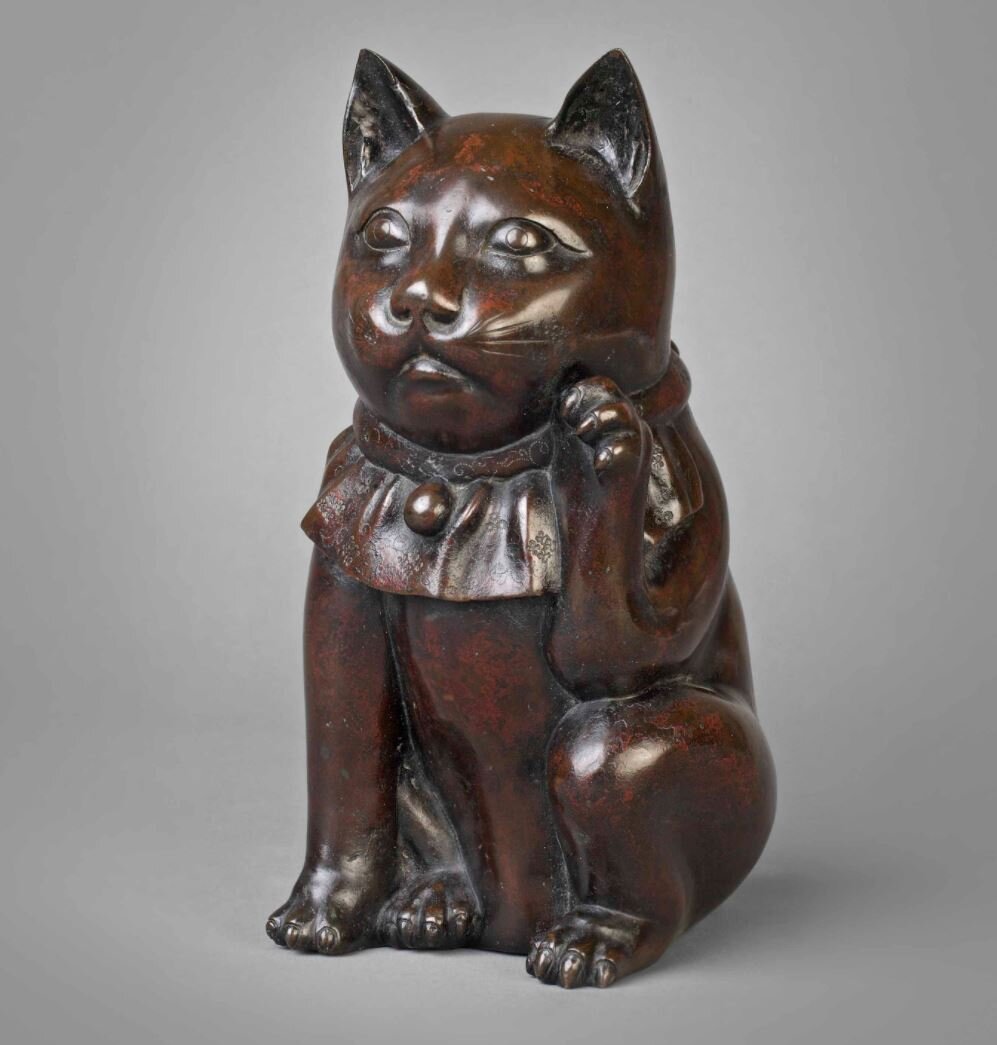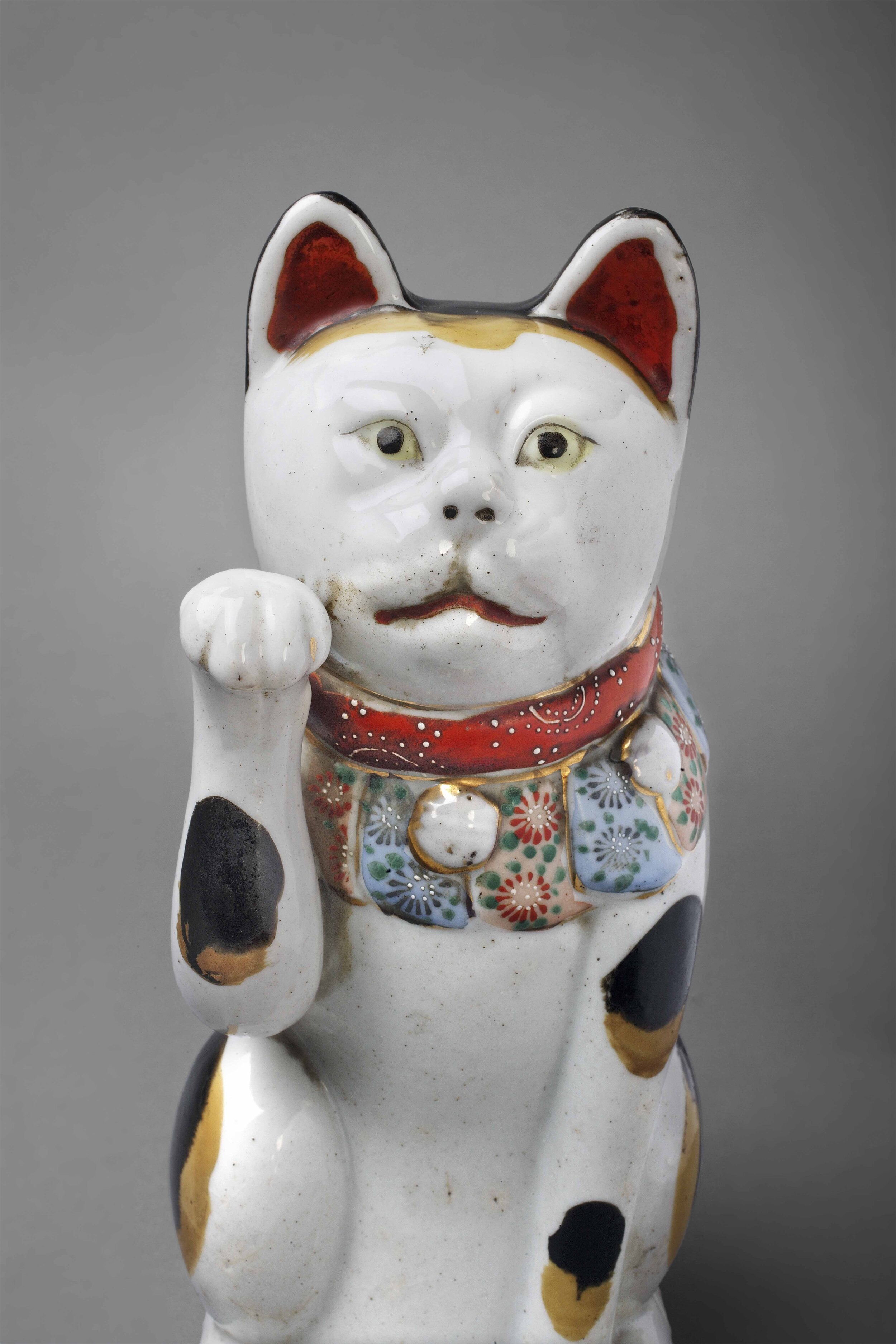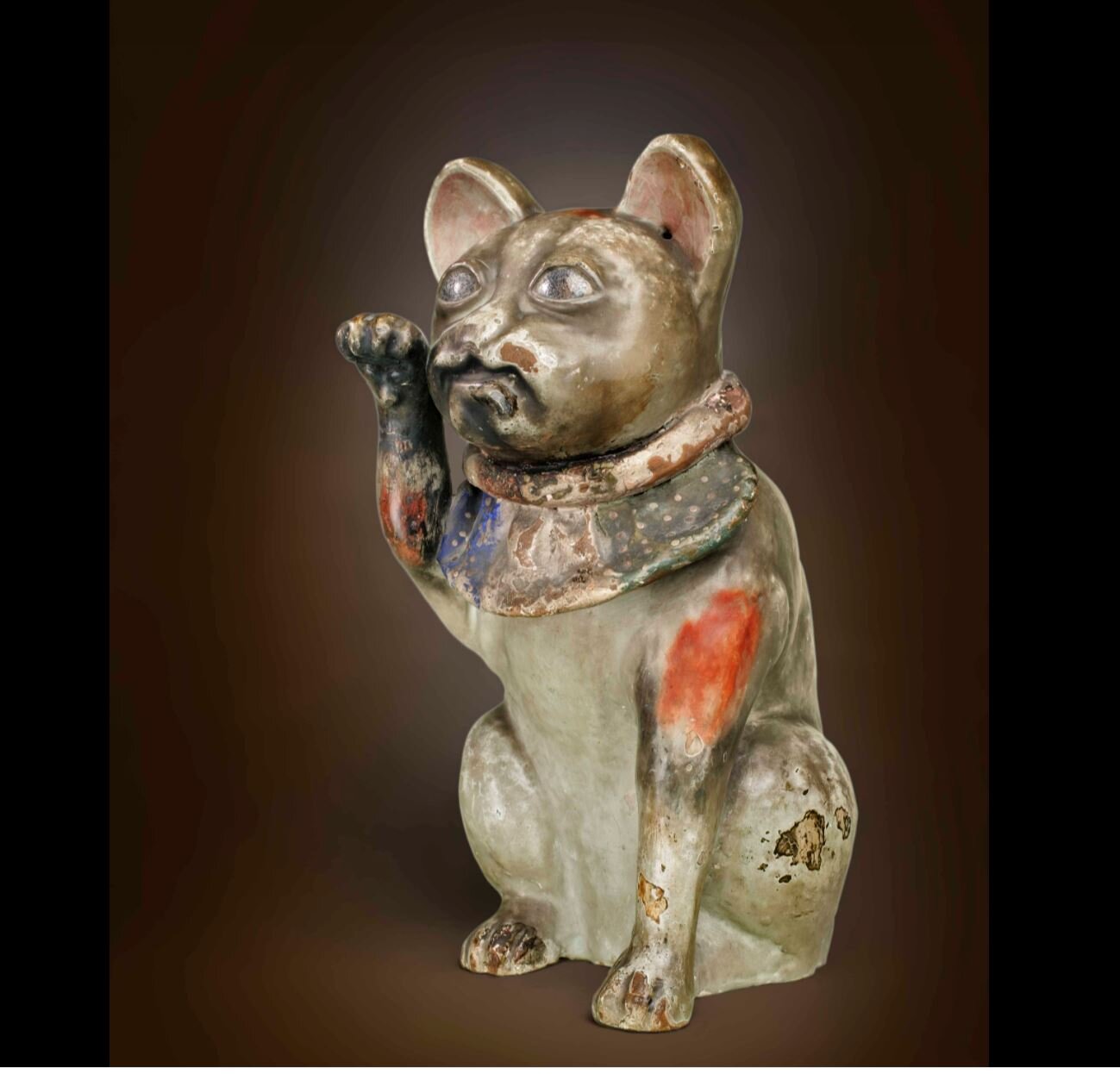Maneki Neko: Japan’s Beckoning Cat
The domestic cat first came to Japan in the sixth century, around the same time as Buddhism, to protect sacred texts from the damage mice can cause. Genetic research indicates that the domestic cat probably came to Japan from India, via China. Japan is one of a few countries where cats, and black cats specifically, are considered to bring good luck.
The maneki neko is a Japanese talisman of good fortune (engimono) that attracts happiness, wealth and good fortune.
There is, of course, a language of maneki neko symbolism to decode. A raised left paw is supposed to attract customers to your business; a raised right paw invites good fortune and money. Both paws up represents protection. The color of the cat also has meaning. While calico is traditional (and luckiest), maneki neko come in a variety of colors, each symbolizing a different quality. One must also pay attention to what the cat is holding: coin, fish, etc.
The earliest versions of the maneki neko were called marushime neko and wore a simple collar and bow. If you are interested in learning about the origins of the maneki neko, The House recommends Kaibyo: The Supernatural Cats of Japan by Zack Davisson. (TL;DR: A nobleman saw a cat waving at him from across the road. He crossed the street to get a better look at the cat and lightning struck the spot where he was previously standing. The beckoning cat had saved his life.)
The Mingei International Museum has an extraordinary collection of more than 150 beckoning cats. There is also a Lucky Cat Museum in Cincinnati, Ohio.
Download a coloring sheet of a maneki neko courtesy of the Mingei International Museum.
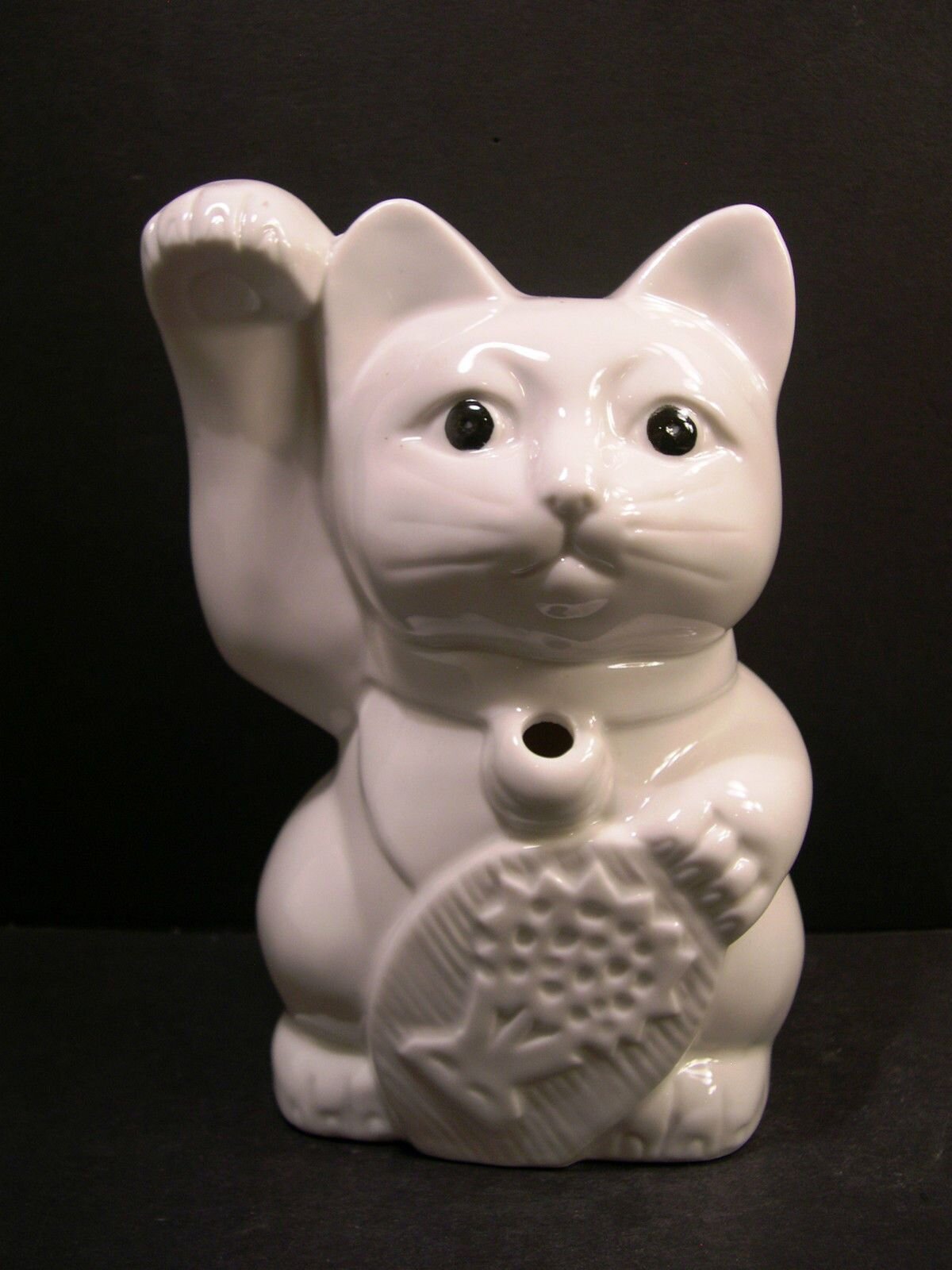
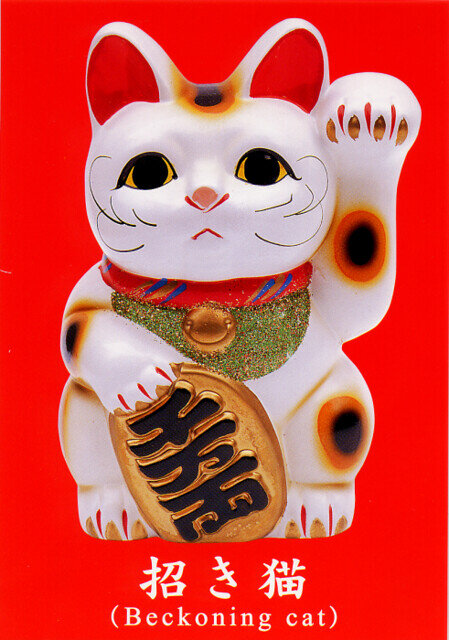
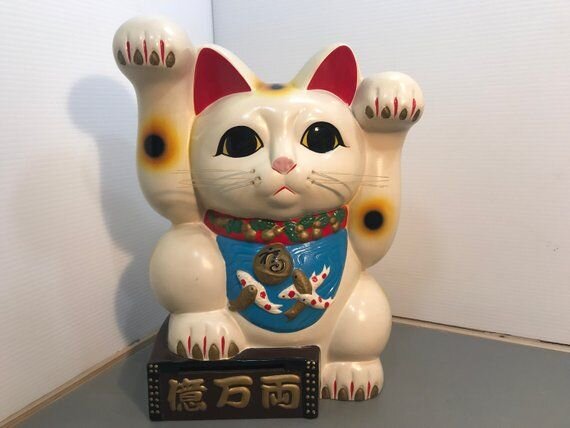
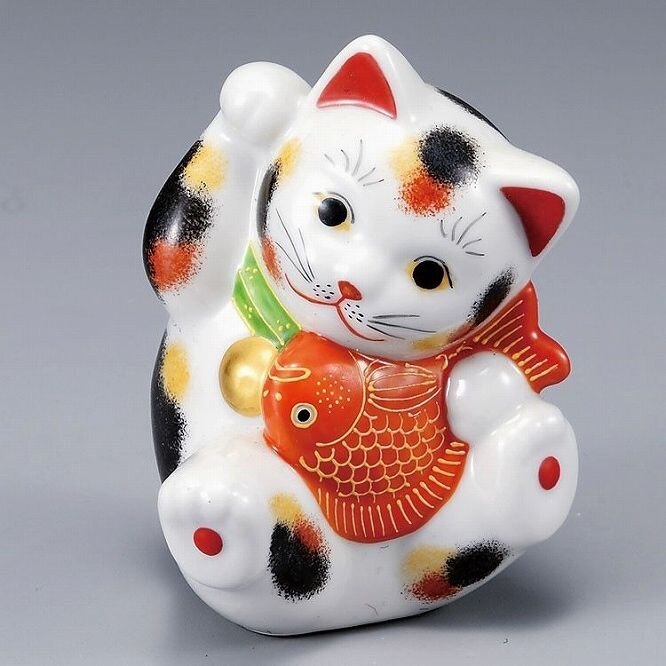
Calico Maneki Neko

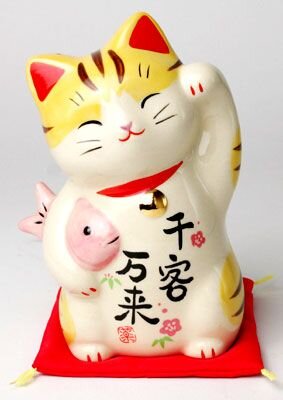
Bronze Maneki Neko, Mingei International Museum
Porcelain Maneki Neko, Mingei International Museum, 20th Century Japan
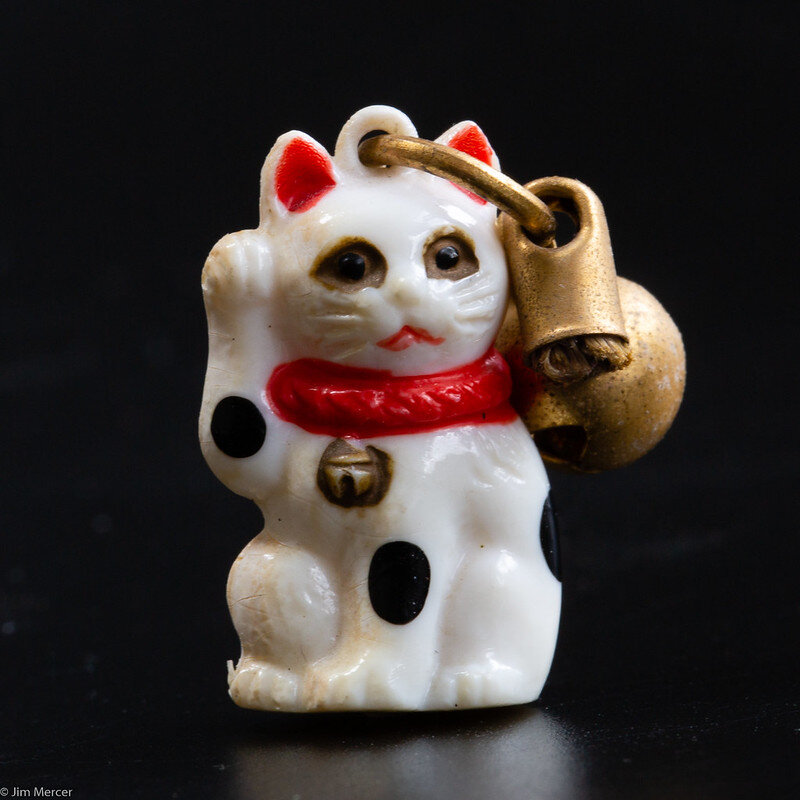
Ceramic Maneki Neko, Mingei International Museum, late 19th century
Shiragaki Maneki Neko, Clay, Mingei International Museum

Golden Maneki Neko, House of Good Fortune Collection

Japanese Ko Kutani Maneki-Neko Beckoning Cat, Meiji Period
Ivory Maneki Neko Bead, Mingei International Museum
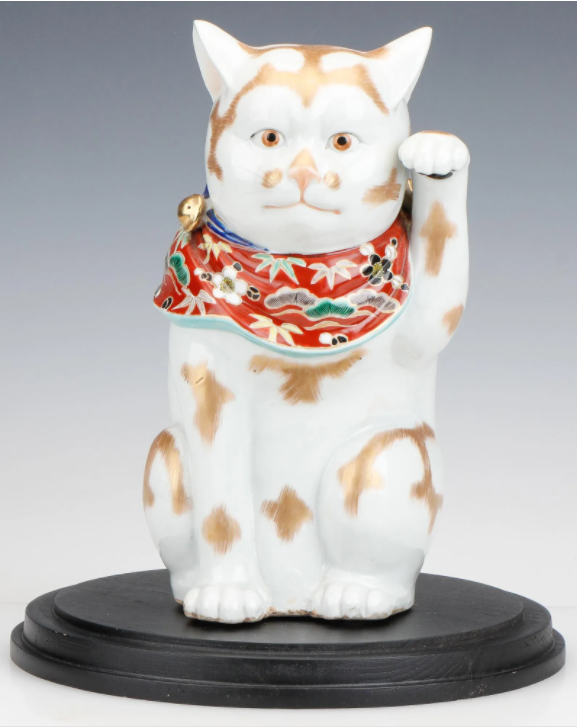
Japanese Ko Kutani Maneki-Neko Beckoning Cat, Meiji Period
Maneki Neko, papier mache, from the collection of the Museum of International Folk Art


